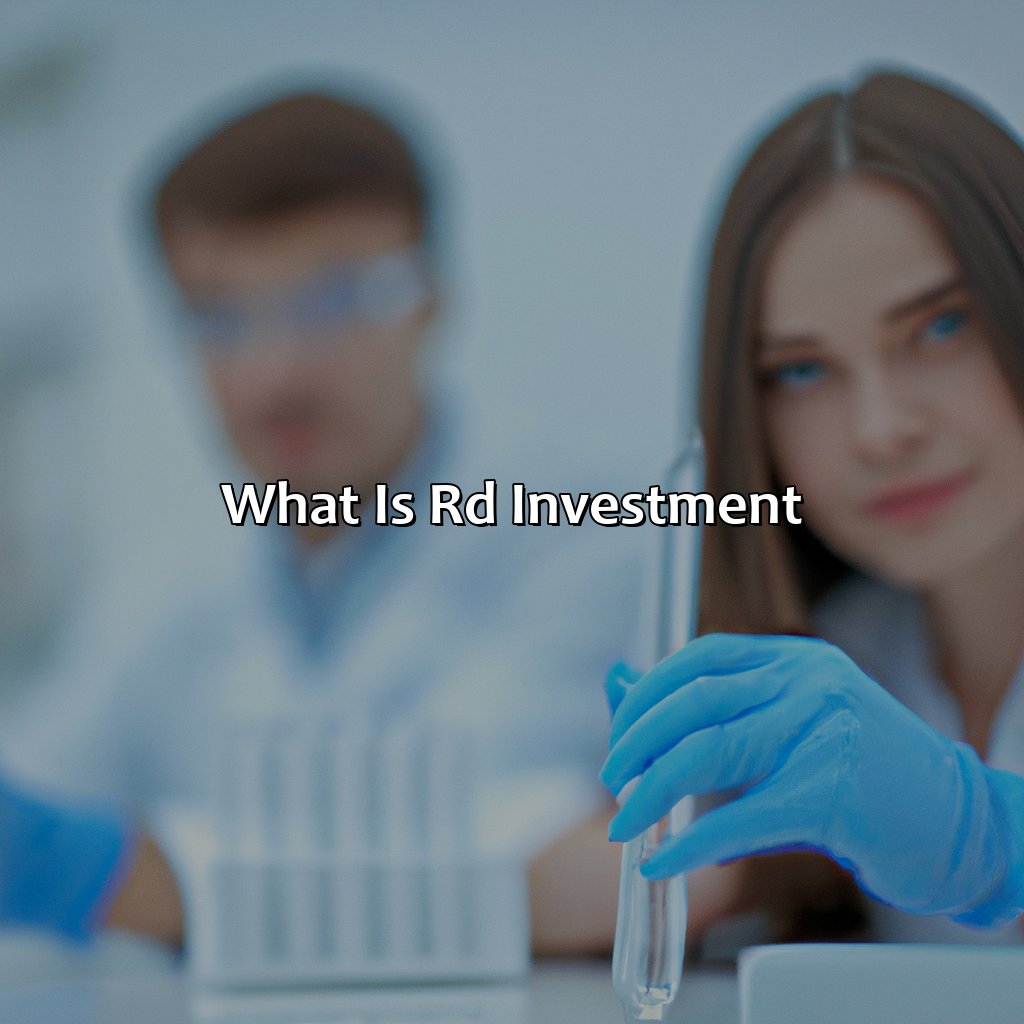What Is R&D Investment?
Key Takeaways:
- R&D investment refers to the funds allocated by a company towards research and development activities aimed at improving products and services, introducing new technologies and processes, and exploring new markets and opportunities.
- R&D investment plays a critical role in promoting innovation, growth, and competitiveness in companies. It enables companies to stay ahead of the competition, improve profitability, and accelerate business growth.
- There are three main types of R&D investment: basic research, applied research, and experimental development. Companies can choose a combination of these types based on their specific needs and objectives.
- Companies with high R&D investment include technology giants such as Alphabet, Amazon, and Intel. These companies have consistently invested in R&D not only to stay competitive but also to drive breakthrough innovations and achieve long-term success.
Are you unsure about what constitutes an R&D investment? Keep reading to learn how to identify and capitalize on these unique opportunities. With the right investments, you can tap into untapped potential and spur growth in your business.
Definition of R&D investment
Investing in Research and Development (R&D) is the process of discovering new knowledge, creating new products or improving existing products, and developing new technologies. R&D investment involves allocating resources to develop new ideas, products or services that can benefit the company in the long run. The aim is to improve the quality of products or services while reducing the cost of production. By doing so, a company can gain a competitive edge over its rivals and increase its customer base.
Companies invest in R&D to stay ahead in the market and innovate new solutions. This process involves a significant amount of risk and often requires huge capital investment. To stay up-to-date with new market trends and technologies, companies need to invest in R&D continuously. Furthermore, it is imperative for firms to have a long-term plan before commencing R&D investment.
While investing in R&D, a company should focus on identifying and analyzing the market needs, target audience and competitors. It should research current trends and develop new ideas that can capture the market. A company should also ensure that it has adequate resources, such as skilled personnel and materials, to develop the new products or technologies. Finally, the company should have a well-defined strategy for launching the new products or services.
In summary, investing in R&D is a significant investment for most companies, and it can be beneficial in the long run. To be successful in R&D investment, companies need to have strategic planning and manage the risks involved. It is imperative for firms to keep up with trends, continuously invest in this process, and develop new products or technologies to stay ahead in the market.
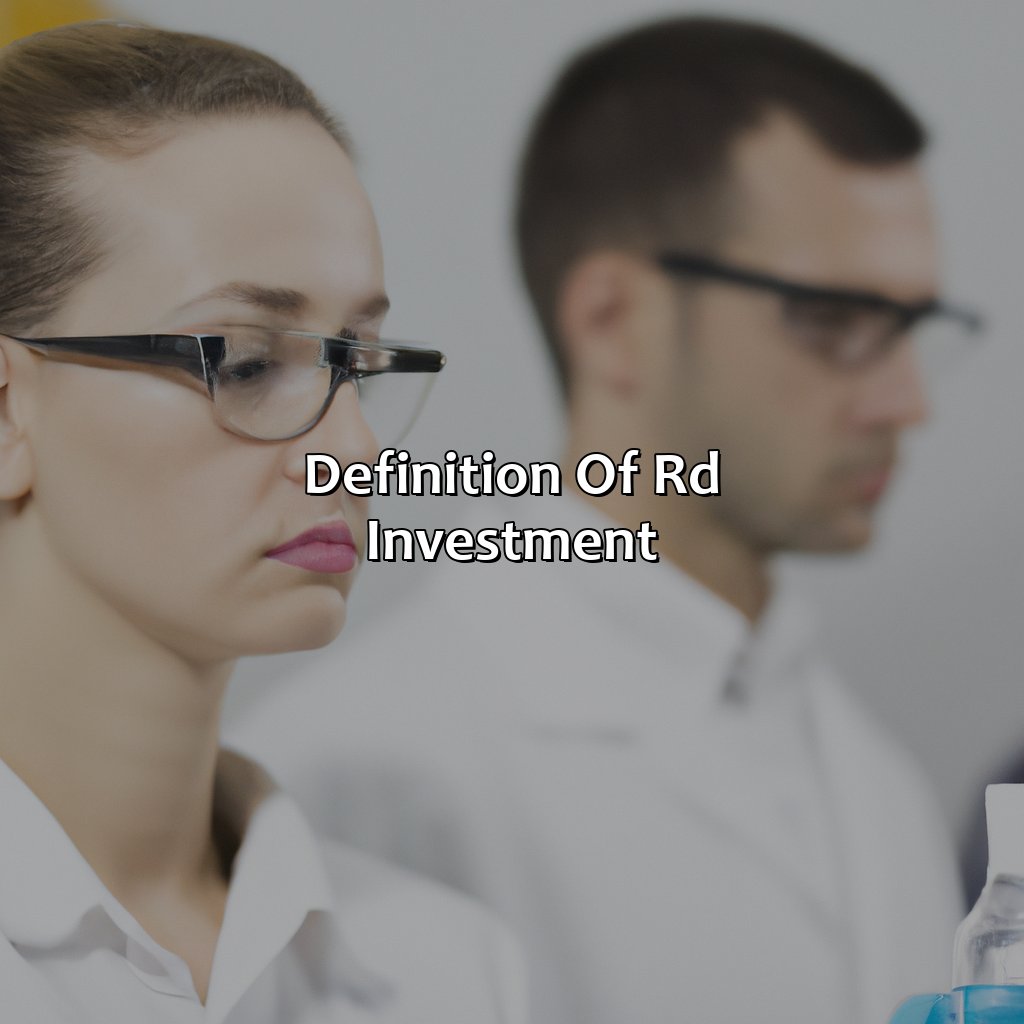
Image credits: retiregenz.com by Harry Duncun
Importance of R&D investment
Gaining understanding of R&D investment is essential. It helps you innovate and grow, plus become more competitive and profitable. Investing in R&D allows you to increase your knowledge and find new, innovative products, processes or services. This can give you an advantage above your rivals. Furthermore, investing in R&D can help your business develop by boosting profits and competitiveness.
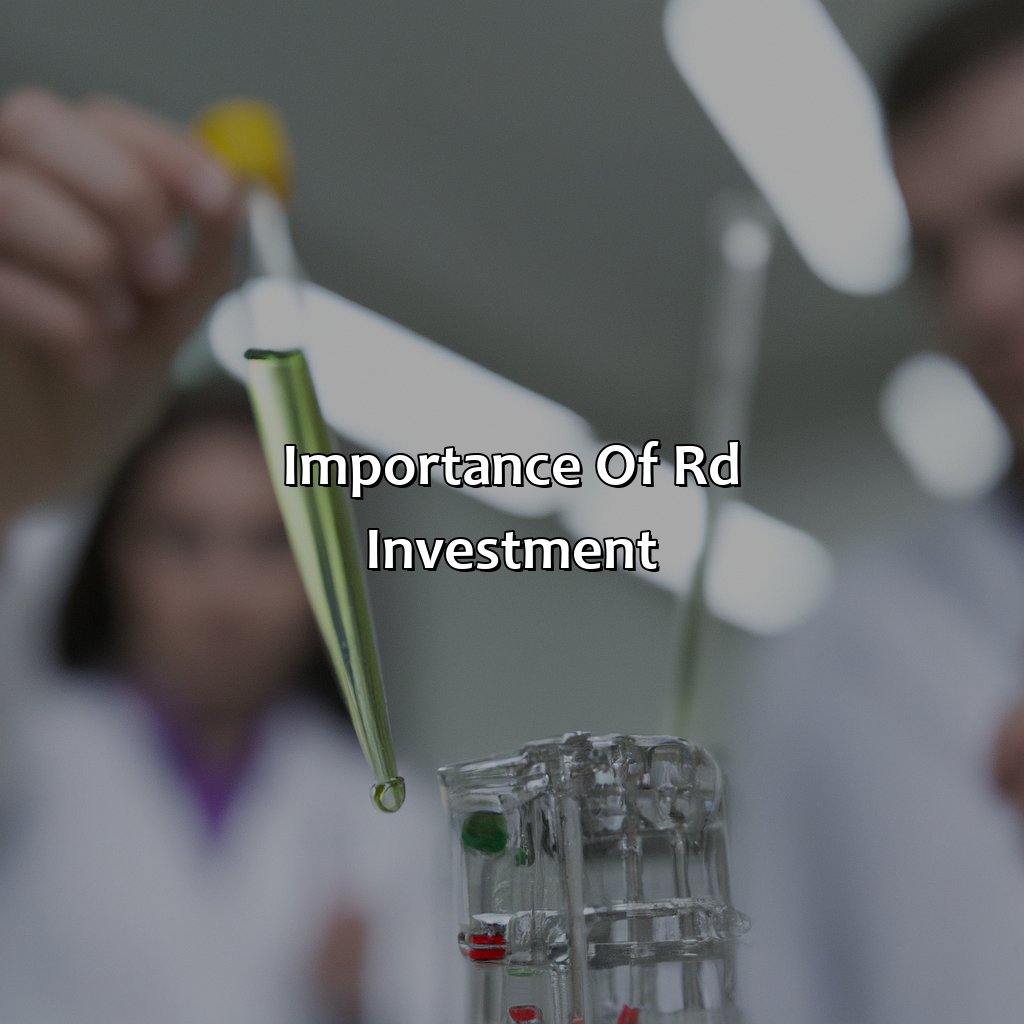
Image credits: retiregenz.com by Adam Washington
Facilitates innovation and growth
Investing in research and development (R&D) is vital for driving innovation and fueling growth in businesses. R&D investment enables companies to develop cutting-edge products, services, and technologies that help them stay ahead of the competition. By investing in R&D, businesses can optimize their performance, improve their market position, and respond proactively to the ever-changing demands of customers.
Moreover, R&D investment is required for organizations to gain a competitive advantage by creating new markets or disrupting existing ones. It accelerates the process of identifying and solving technological challenges by promoting collaboration and experimentation. The transformational impact of R&D investment also allows companies to improve efficiency, reduce costs, enhance quality control measures, and streamline production processes.
In today’s fast-paced economy driven by technology advancements, businesses cannot afford to overlook the importance of investing in R&D. Failing to do so may result in becoming irrelevant or outdated compared to competitors who are continuously innovating and improving. Therefore, it is crucial for businesses across all industries and sizes to consider increasing their R&D investments as part of their long-term strategy for success. R&D investment: the not-so-secret ingredient to staying ahead of the competition and making bank.
Increases competitiveness and profitability
Innovation and Development investments contribute to augmenting market position and financial strength. The spending on research and development creates exceptional value for businesses in many ways. Below are some reasons why investing in R&D improves competitiveness and profitability.
- Enhance Product Quality: By investing resources in R&D, companies can create high-quality products that meet the ever-growing customer demands.
- Boost Sales and Revenue: Innovations from R&D investments increase brand recognition, stimulating sales, revenue growth, and customer retention.
- Stay ahead of Competitors: Emphasizing R&D leads to a competitive advantage by introducing innovative products or services before competitors can do the same.
- Cost Benefits: Investing in R&D capabilities helps identify methods of reducing production costs while increasing efficiency without resorting to cheap labor or poor-quality materials.
R&D investments provide firms with unique benefits, such as building relationships with stakeholders, perfecting existing models, identifying emerging markets, assessing potential risks that can be harnessed long-term strategies.
For centuries, research and development have been crucial for innovating new methods of manufacturing consumer goods while significantly improving them. One example is how Thomas Edison’s journey took years before he invented the light bulb. His research reflected a strong commitment resulting in massive contributions today’s world has come to rely upon since its invention.
Get ready for some scientific exploration; this article is about to take you on a rollercoaster ride through the various types of R&D investment!
Types of R&D investment
To grasp the various sorts of research and development investment, take a deeper look into the kinds of R&D investment. These comprise:
- Basic Research
- Applied Research
- Experimental Development
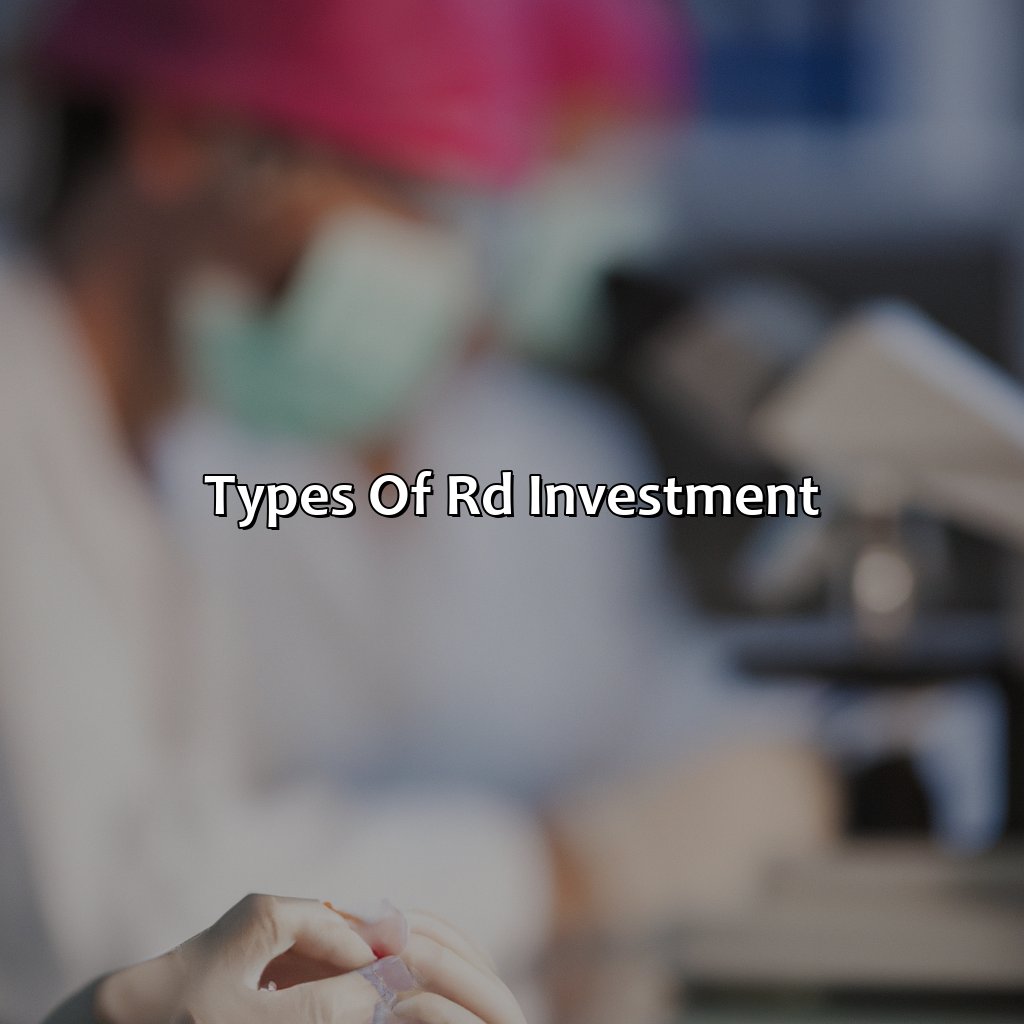
Image credits: retiregenz.com by James Washington
Basic research
Research conducted purely for increasing scientific knowledge without immediate or known applications is a fundamental exploration of a discipline. Such inquiries typically focus on answering abstract questions and generating innovative theories, ideas, and concepts. Basic research aims to expand the understanding of fields such as physics, astronomy, chemistry, and biology by exploring different phenomena at a cellular level.
Moreover, Basic research can be seen as a pure form of science that plays a significant role in shaping the future of our society. It involves conducting experiments without any apparent objective but instead focuses on developing new theories and uncovering new possibilities. Basic research findings are often used as building blocks for applied research that leads to practical applications.
One of the most remarkable milestones in basic research was James Clerk Maxwell’s discovery of electromagnetic waves in the 1860s. Although his discoveries did not have practical implications at that time, they provided an overarching solution to unexplained phenomena and became the foundation for modern communications technology like radio and television signals.
Applied research: when scientists go beyond theories and start creating real-world problems for themselves to solve.
Applied research
Research and Development investment involves various types, including research aimed at solving immediate problems through Applied Technology. Applied R&D focuses on developing solutions for specific real-life scenarios by utilizing existing knowledge and testing them in practical settings. This type of R&D investment seeks to find solutions to current challenges faced in a particular field, industry or organization.
Applied research starts with identifying an area of concern and defining the problem before researchers gather data and conduct studies on the field. The research aims to explore possible solutions using empirical evidence, which is then tested through experimentation or simulated models. Researchers typically work together with users from the target industry or area of concern to have a better understanding of the challenges faced and create relevant solutions.
Pro Tip: Collaborating with potential users while conducting applied research can help researchers obtain practical insights into the organizations’ unique needs, valid use cases, and user behaviour- resulting in better outcomes.
Experimental development: Because who needs a plan when you can just throw things at the wall and see what sticks?
Experimental development
In Executive Exploration, organizations perform trials to validate newly developed ideas. They test the prototype in actual or simulated conditions to understand its functionality, characteristics, and possibilities of improvement. It is a crucial process for innovation-driven companies as it requires significant investment in time, talent, and resources. Companies use experiments to improve their products’ features or build new product offerings according to market demand and customer preferences.
Executive exploration involves testing for new forms of products that are not yet available on the market. During the trial phase, teams seek to identify potential weaknesses and limitations so that they can rectify these issues before launching the product into mass production. This method has proven successful over the past decade when creating innovative new products.
One unique aspect of executive exploration is that stakeholders can evaluate different prototypes simultaneously and choose the best model for further development. In this way, organizations save a considerable amount of time compared with previous practices where one model was tested at a time.
Molten Metals Inc utilized executive exploration while developing ultra-high-temperature coatings in 2018. Through rapid experimentation for melting metals at high temperatures (~3000°C) under varying atmospheric compositions, researchers discovered that molten metal could tolerate high levels of oxygen without oxidizing thanks to their sensitive oxygen sensors.
Overall, executive exploration is an effective approach that enables organizations to tap into unknown areas by experimenting with different versions of product prototypes before making huge investments. By investing in experimentation during early stages of development, organizations can understand customer requirements better and optimize their products accordingly with evolutionary development methods giving rise to several opportunities for growth against competitors.
Looks like these companies are investing in R&D like it’s their full-time job…oh wait, it is.
Examples of companies with high R&D investment
For companies that prioritize research & development, substantial investment is crucial for innovation and growth. Here are six global companies that are known for their high R&D investment:
- Apple: In 2020, Apple invested $18.75 billion in R&D, making them one of the top technology companies in terms of R&D investment.
- Amazon: The e-commerce giant invested $35.93 billion in R&D in 2020 with a focus on artificial intelligence, machine learning, and cloud computing.
- Samsung: As a leading electronics manufacturer, Samsung invests heavily in R&D, with a $18.9 billion investment in 2020.
- Microsoft: With a focus on enhancing its cloud-based services, Microsoft invested $19.3 billion in R&D in 2020.
- Alphabet (Google): The parent company of Google invested $26.1 billion in R&D in 2020 with a focus on artificial intelligence and machine learning.
- Tesla: The electric vehicle company invested $1.34 billion in R&D in 2020, with a focus on developing advanced battery technology.
It is worth noting that R&D investment is not solely limited to technology companies. Many companies in industries such as pharmaceuticals and healthcare heavily invest in R&D to develop new drugs or medical equipment and improve patient outcomes.
In today’s fast-paced business world, companies that fail to invest in R&D risk being left behind by their competitors. It is crucial for businesses to continually innovate to remain relevant and meet the evolving needs of their customers. Don’t miss out on the potential growth and success that R&D investment can bring to your company.
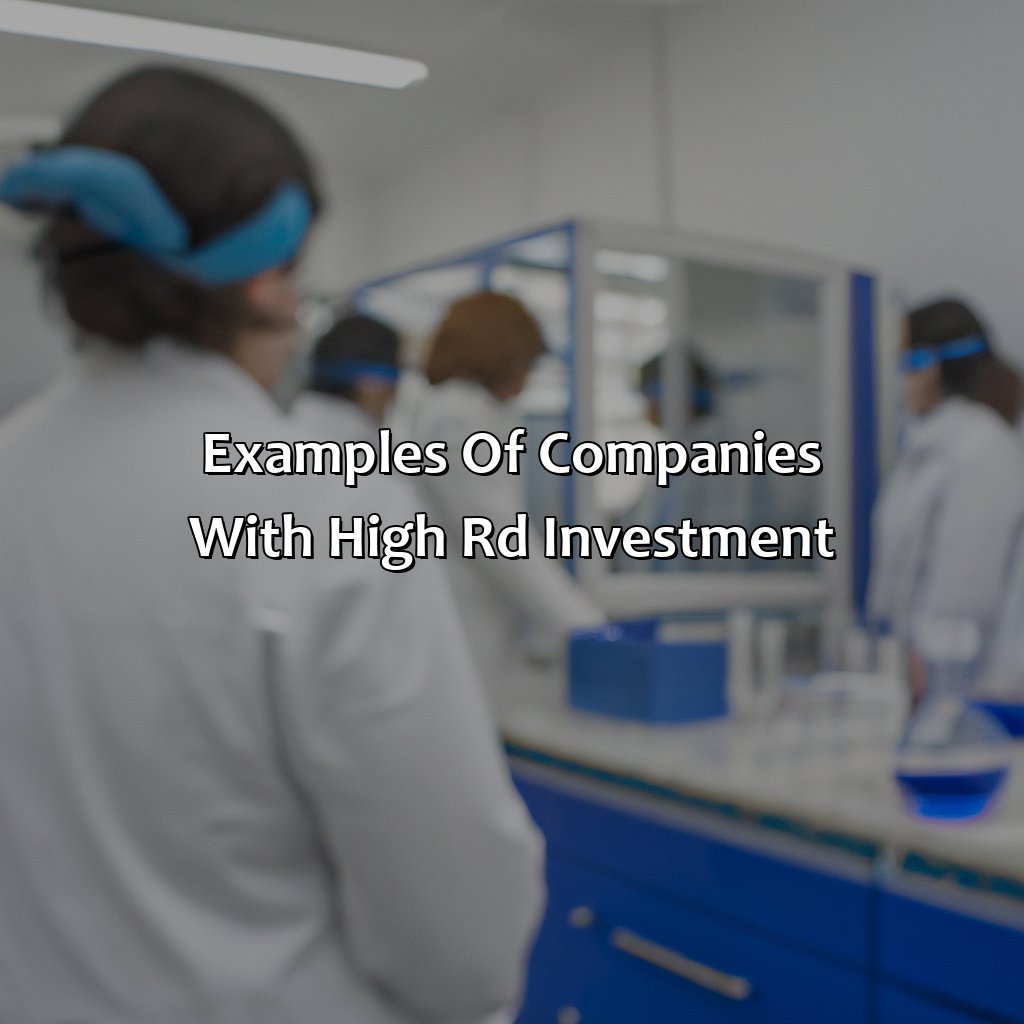
Image credits: retiregenz.com by Harry Washington
Some Facts About R&D Investment:
R&D investment is the process of funding and conducting research activities to develop new products, services, or technologies. (Source: Investopedia)
R&D investment is a crucial component of innovation and helps businesses stay competitive and adapt to changing market demands. (Source: Forbes)
R&D investment can take various forms, including in-house research, collaborations, and partnerships with other companies or academic institutions. (Source: World Intellectual Property Organization)
Governments incentivize R&D investment through tax breaks, grants, and subsidies to promote economic growth and development. (Source: OECD)
The pharmaceutical, technology, and automotive industries are among the sectors that typically invest the most in R&D. (Source: Statista)
FAQs about What Is R&D Investment?
What is R&D investment?
R&D investment refers to the expenses incurred by companies or organizations in research and development activities to create new products, services, or processes or to improve existing ones.
Why is R&D investment important?
R&D investment is important as it allows companies to develop new products, services, or processes that can lead to increased profits, market share, and competitiveness. It also contributes to the advancement of technology and promotes innovation, which can lead to societal benefits.
What are some examples of R&D investment?
Examples of R&D investments can include designing and testing new products or services, improvements to existing products or services, developing new software, testing new production methods, and researching new technologies or scientific concepts that may have commercial applications.
How is R&D investment different from other types of investment?
R&D investment is different from other types of investment in that it is focused on research and development activities rather than capital investments in physical assets. While other types of investments may generate short-term gains, R&D investment is focused on long-term growth and development.
What are the benefits of R&D investment?
The benefits of R&D investment include increased competitiveness, increased profitability, improved market share, and the ability to stay ahead of the competition. Additionally, R&D investments may lead to technological advancements and improved products or services, which can benefit society as a whole.
How is R&D investment funded?
R&D investment may be funded through a variety of sources, including internal company funds, government grants, and partnerships with other companies or organizations. Many companies also use venture capital or other types of funding to support R&D activities.
 Checkout this IRS Loophole
Checkout this IRS Loophole 
